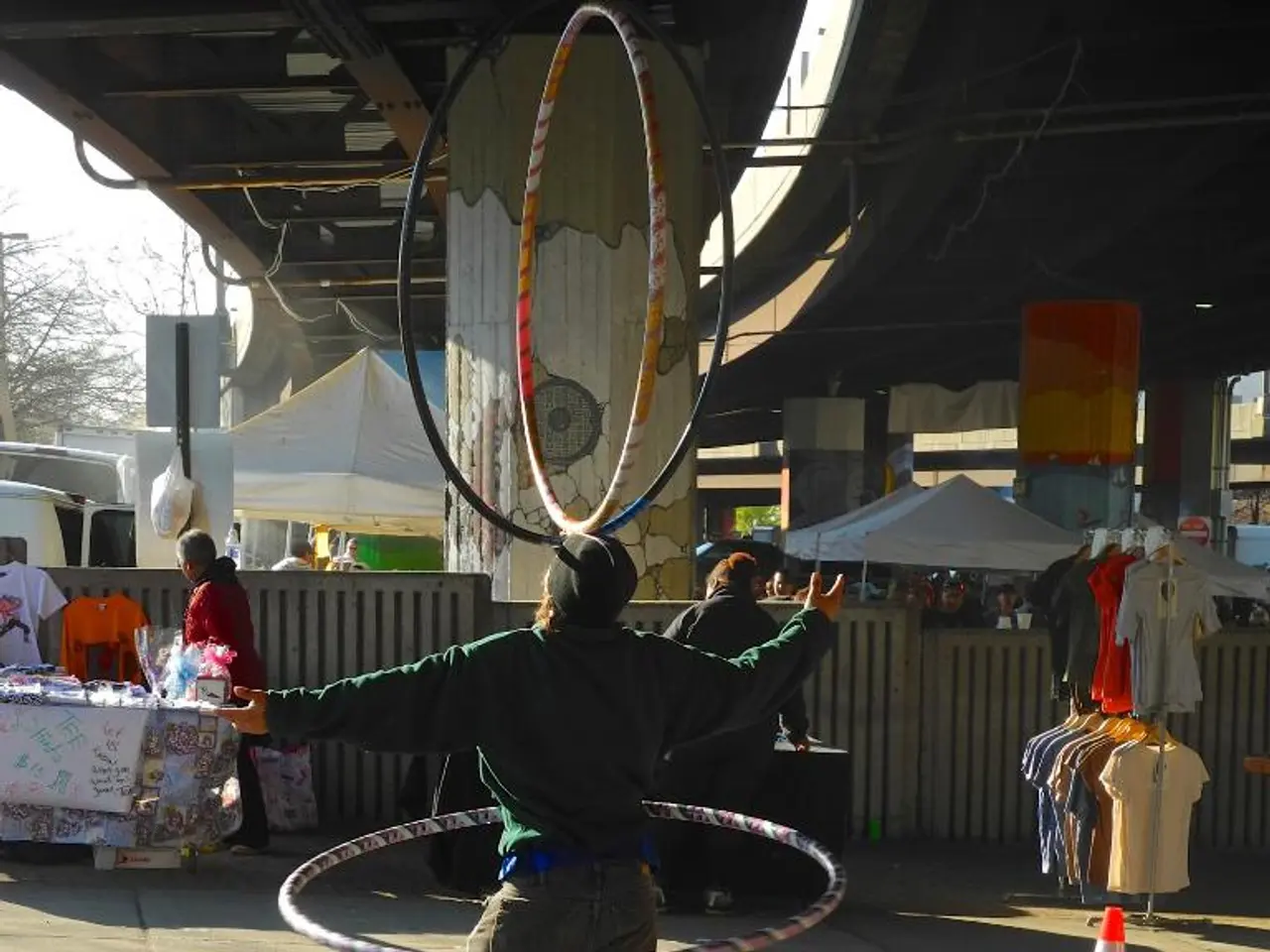Connecting the Harmonies: Strategies for Knitting Your Melody into a Cohesive Composition
==================================================================
In the world of music, a bridge serves as a crucial element that adds depth and diversity to a song's structure. By providing contrast and variety, bridges help maintain listener engagement and keep songs feeling dynamic and fresh.
A bridge typically appears after the second chorus in a standard verse-chorus-bridge structure. It presents a new chord progression, melody, or mood that is different from the verses and chorus, acting as a musical and lyrical "bridge" connecting the earlier part of the song to its conclusion.
Lyrically, bridges often summarise or offer a fresh perspective on the song's theme rather than continuing the story line directly from the verses. For instance, in Britney Spears' iconic hit "Oops!... I Did It Again", the bridge transitions to a funkier section and includes a cinematic spoken-word moment, adding a unique twist to the narrative.
The purpose of a bridge is multifaceted. It can be used to release tension, build tension, or create contrast. For example, in 50 Cent's "In Da Club", the bridge switches to a slower, more punchy flow and uses a climbing orchestral French horn sample, creating a tension that nicely loops back to the second verse.
Bridges can also serve as turning points in the narrative arc of a song. Take Taylor Swift's "All Too Well" for example, where the bridge provides a potent emotional shift and a new perspective that further the song's narrative of a painful breakup.
In worship songs like "Here I Am to Worship" and "What a Beautiful Name", the bridge lifts and builds on the song’s ideas, bridging the chorus back into another chorus. This technique is also seen in the classic AABA form, as used in songs like "Yesterday", where the bridge (B section) introduces new themes or perspectives before returning to the final verse (A).
When it comes to writing a bridge, there are no strict rules. You have the creative license to use a bridge or not in your songwriting. You can turn your bridge into something completely crazy, unique, and different, as demonstrated by Brian Wilson. Bridges most often follow a VCVCBV format, but this can vary depending on the song's style and structure.
In instrumental compositions, the bridge can offer a shift in mood or tone that provides a fresh angle to the story the music is telling. In the Beach Boys' "Good Vibrations", the bridge is an example of a section with a well-known change in rhythm, dynamics, or instrumentation.
In summary, the bridge is a vital part of song structure that enriches the musical and lyrical narrative by providing contrast and linking parts of the song, keeping listeners engaged through variety and emotional development. Whether it's a funky spoken-word moment, a gospel-style choir, or a climbing French horn sample, the bridge is a versatile tool that can elevate a song to new heights.
Entertainment and music distribution often intertwine in the creation and dissemination of songs. A well-crafted bridge in a song can enhance its appeal, making it attractive for distribution and consumption in the entertainment industry.
Musicians use bridges to offer a unique twist in their music, providing fresh perspectives and enhancing the overall listening experience, which can be a key factor in the successful distribution and enjoyment of their work.








